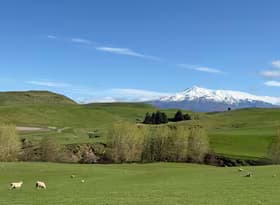Articles
There are some early, small, tentative signs of a turnaround according to Infometrics’ latest monitoring of regional economies, but tough conditions remained for many areas and sectors at the end of 2024. Read
There are some early, small, tentative signs of a turnaround according to Infometrics’ latest monitoring of regional economies, but tough conditions remained for many areas and sectors at the end of 2024. Read
Our recent update of the Infometrics Regional Economic Profile provides us with another year of detailed data across regional economies to examine. Over the March 2024 year, our analysis shows that rural economies had the strongest economic activity growth, with the primary sector a key part of this growth story. Read
Swimming at our picturesque beaches, rivers and lakes is a Kiwi summer staple as many of us have time off in the summer months. Sometimes our favourite swimming spots can become contaminated with unsafe levels of organisms such as E. Read
US President Ronald Reagan is famous for repeatedly using the phrase “trust, but verify”, underscoring the importance of testing assumptions to confirm that claims are true. It’s a phrase that economists also keep in mind when dealing with a vast array of different datasets. Read
New Zealand’s provincial economies contribute greatly to the overall economy, providing dairy, meat, and horticultural products to the nation and overseas export markets. Read
Infometrics has recently added a number of environmental indicators to the Regional Economic Profile and Quarterly Economic Monitor, including estimates of carbon emissions. This article explores how we have constructed our estimates, and what insights can be gained from our analysis. Read
The economy remains in the thick of it, with tough operating conditions in the September quarter according to Infometrics’ latest monitoring of regional economies. Read
In our October 2024 Chart of the Month, we explore the role of peer to peer (P2P) accommodation around the country, finding that P2P makes up more than a third of guest nights in some areas, and not in the tourism hotspots that you might expect. Read
We are introducing a new indicator for first home buyer activity – First Home Loans. This article explores first home buyer activity in the housing market from a few different angles and introduces our new measure. Read









